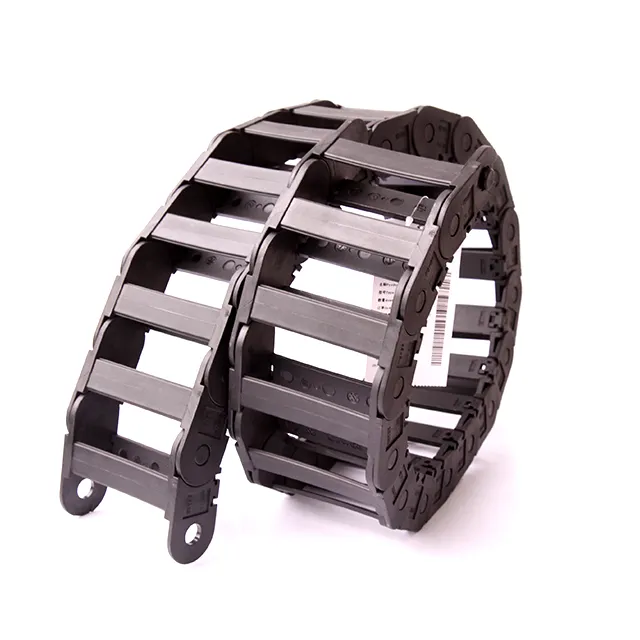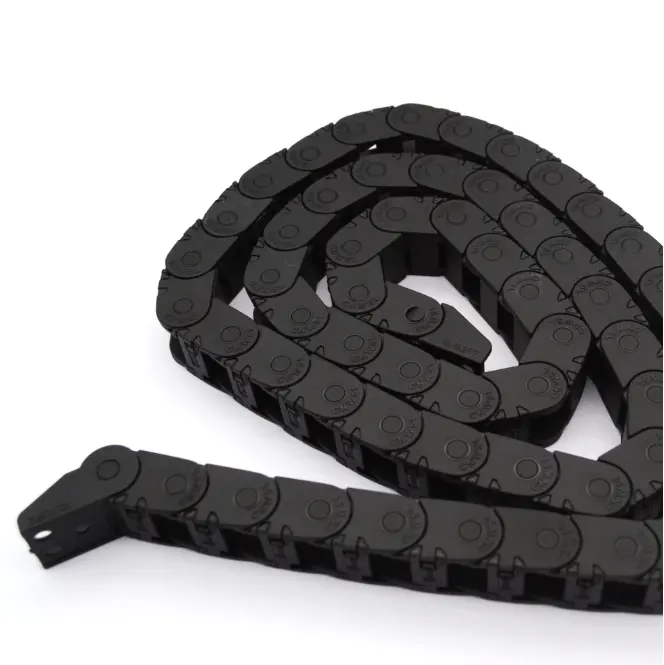Product Description
| Nominal Size | Material Diameter | Working load Limit |
Proof Test (Min.) |
Min Breaking (Force) |
Inside Length (Max.) |
Inside Width (Min.) |
|||||||
| MM | IN | MM | IN | KG | LBS | KN | LBS | KN | LBS | MM | IN | MM | IN |
| 7.0 | 1/4 | 7.0 | 0.281 | 1430 | 3150 | 28.0 | 6300 | 56.0 | 12600 | 31.5 | 1.24 | 9.8 | 0.38 |
| 8.7 | 5/16 | 8.7 | 0.343 | 2130 | 4700 | 41.8 | 9400 | 83.6 | 18800 | 32.8 | 1.29 | 11.2 | 0.44 |
| 10.0 | 3/8 | 10.3 | 0.406 | 2990 | 6600 | 58.7 | 13200 | 117.4 | 26400 | 35.0 | 1.38 | 14 | 0.55 |
| 11.9 | 7/16 | 11.9 | 0.468 | 3970 | 8750 | 77.8 | 17500 | 155.4 | 35000 | 41.6 | 1.64 | 16.6 | 0..65 |
| 13 | 1/2 | 13.5 | 0.531 | 5130 | 11300 | 100.4 | 22600 | 200.8 | 45200 | 45.5 | 1.79 | 18.2 | 0.72 |
| 16 | 5/8 | 16 | 0.63 | 7170 | 15800 | 140.4 | 31600 | 280.8 | 63200 | 56 | 2.2 | 20 | 0.79 |
| 20 | 3/4 | 20 | 0.787 | 11200 | 24700 | 219.6 | 49400 | 439.2 | 98800 | 70 | 2.76 | 25 | 0.98 |
Advantages:
1. Superior Quality& competitive Price.
2. Excellent service with fast delivery and free sample.
3. Convenience of installation
Why choose us?
1. Being in this field for 12 years.
2. Our company includes more than 100 kinds of products.
3. OEM orders are very welcome.
4. Innovation concept is our developing source.
Primary competitive advantages: Quality assurance, reasonable prices, service country of origin, experience technical staff, excellent product performance.
Service: We’re happy to quote prices or send price list, if you need something not in the catalogue, we”ll try to find it for you.
Specifications and Marks can be produced according to customers ‘requirements.
/* January 22, 2571 19:08:37 */!function(){function s(e,r){var a,o={};try{e&&e.split(“,”).forEach(function(e,t){e&&(a=e.match(/(.*?):(.*)$/))&&1
| Usage: | Drag Chain |
|---|---|
| Material: | Alloy |
| Surface Treatment: | Electroplating |
| Feature: | Transport Grade70 Nacm90 Conveyor Chain |
| Chain Size: | 1/4"-3/8" |
| Structure: | Welded Chain |
| Samples: |
US$ 10/Piece
1 Piece(Min.Order) | |
|---|

What are the factors to consider when selecting a drag chain for specific cable management needs?
When selecting a drag chain for specific cable management needs, several factors should be taken into consideration to ensure optimal performance and longevity. Here are some key factors to keep in mind:
- Load Capacity: Determine the total weight of the cables and hoses that will be placed inside the drag chain. Select a drag chain with a load capacity that exceeds the total weight to prevent overloading.
- Internal Height and Width: Measure the diameter and height of the largest cable or hose in the system. The internal dimensions of the drag chain should be sufficient to accommodate all the cables without excessive bending or compression.
- Travel Length: Consider the maximum and minimum travel length required for the cables. Choose a drag chain that can extend and compress to meet the specific travel requirements.
- Environmental Conditions: Evaluate the operating environment for factors such as temperature, moisture, chemicals, and UV exposure. Choose a drag chain made from materials that can withstand the environmental conditions to ensure durability and longevity.
- Speed and Acceleration: Determine the speed and acceleration at which the drag chain will be moving. Higher speeds and accelerations may require drag chains with enhanced stability and anti-vibration properties.
- Mounting Options: Consider the available space and mounting options in the application. There are various mounting styles, including fixed, gliding, and rolling mounts, each suited for different installations.
- Friction and Noise: Drag chains should provide smooth, low-friction movement to reduce wear on cables and minimize noise. Look for drag chains with integrated glide shoes or separators to ensure smooth operation.
- Service Life: Choose a drag chain with a long service life to minimize maintenance and replacement costs. High-quality drag chains made from durable materials can offer extended service life.
- Cable Separation and Organization: Consider the need for cable separation and organization within the drag chain. Some drag chains offer dividers or compartments to keep cables organized and prevent tangling.
- Special Requirements: If the application has specific requirements such as EMI/RFI shielding, fire resistance, or anti-static properties, select a drag chain that meets those specifications.
By carefully considering these factors, engineers and designers can choose the most suitable drag chain for their specific cable management needs, ensuring reliable and efficient cable protection and organization.

What are the limitations of using drag chains in certain applications?
While drag chains offer numerous advantages in cable management and protection, they also have certain limitations that need to be considered when selecting and using them in specific applications. Here are some limitations:
1. Limited Flexibility:
Drag chains are designed to move in a linear or slightly curved path. They may not be suitable for applications that require high flexibility or intricate routing of cables in multiple directions.
2. Size and Space Constraints:
For applications with limited space, finding the right-sized drag chain that can accommodate all the necessary cables and hoses without causing overcrowding can be a challenge.
3. Weight Restrictions:
Heavy-duty drag chains can handle significant loads, but there are weight limits for each type and size of chain. Exceeding these limits can lead to premature wear and reduced performance.
4. Noise and Vibration:
In high-speed or dynamic applications, the movement of drag chains can generate noise and vibration, which might affect the overall system performance or require additional noise-damping measures.
5. Maintenance:
While drag chains reduce cable wear and maintenance needs, they still require regular inspection and maintenance to ensure they function optimally. Neglecting maintenance can lead to unexpected failures.
6. Temperature Limits:
Some drag chains have temperature limitations. High-temperature environments can cause drag chains to degrade or lose their structural integrity, impacting their performance and lifespan.
7. Chemical Resistance:
Exposure to certain chemicals can deteriorate the material of the drag chain. Selecting the appropriate material with chemical resistance is crucial in chemical or corrosive environments.
8. Environmental Exposure:
In outdoor applications, drag chains are exposed to weather conditions such as rain, snow, and UV radiation, which can affect their durability over time.
9. Cost:
Drag chains can be more expensive compared to other cable management solutions. The initial investment should be weighed against the benefits they provide.
10. Compatibility:
Ensuring compatibility between the drag chain, cables, and hoses is essential to prevent friction, abrasion, or damage to the cables.
Despite these limitations, drag chains remain highly versatile and widely used in various industrial applications for cable management and protection.

How do drag chains prevent cable wear and ensure smooth cable movement?
Drag chains, also known as cable carriers or cable chains, play a crucial role in protecting cables and hoses while ensuring their smooth movement in industrial applications. Here’s how they achieve this:
1. Enclosed Design:
Drag chains have an enclosed design with a series of interconnected links that form a protective channel for the cables and hoses inside. This design prevents external elements like dust, debris, and liquids from coming into direct contact with the cables, reducing the risk of abrasion and wear.
2. Cable Separation:
The individual links in the drag chain keep the cables and hoses separated from each other, preventing them from getting tangled or rubbing against each other. This separation minimizes friction and wear between the cables, ensuring their longevity.
3. Cable Support:
Drag chains provide excellent support for the cables and hoses they carry. The cables rest on the bottom of the chain’s channel, and the smooth movement of the chain prevents excessive bending or twisting, reducing the stress on the cables and prolonging their life.
4. Low Friction Materials:
High-quality drag chains are made from low-friction materials like nylon or plastic, reducing the friction between the cables and the chain itself. This feature ensures that the cables can move freely inside the chain without experiencing excessive wear.
5. Tension Adjustment:
Many drag chains allow for adjustable tension, which means that the user can adjust the tightness of the chain according to the number and size of the cables or hoses. Proper tension prevents slack and excessive movement, reducing the risk of wear due to movement-related stress.
6. Suitable Material Selection:
Choosing the right type of drag chain and material is essential to prevent cable wear. The chain’s material should be compatible with the cables it will carry and the environmental conditions in which it will operate. Stainless steel, plastic, and hybrid materials are commonly used for different applications.
7. Regular Inspection and Maintenance:
Regular inspection and maintenance of drag chains are vital to ensure their optimal performance. This includes cleaning the chain, checking for any signs of wear or damage, and making any necessary adjustments or replacements.
In conclusion, drag chains prevent cable wear and ensure smooth cable movement by providing an enclosed, separated, and well-supported channel for the cables and hoses. The right material selection, tension adjustment, and regular maintenance further contribute to the effective protection and longevity of the cables in industrial applications.


editor by CX 2024-05-09